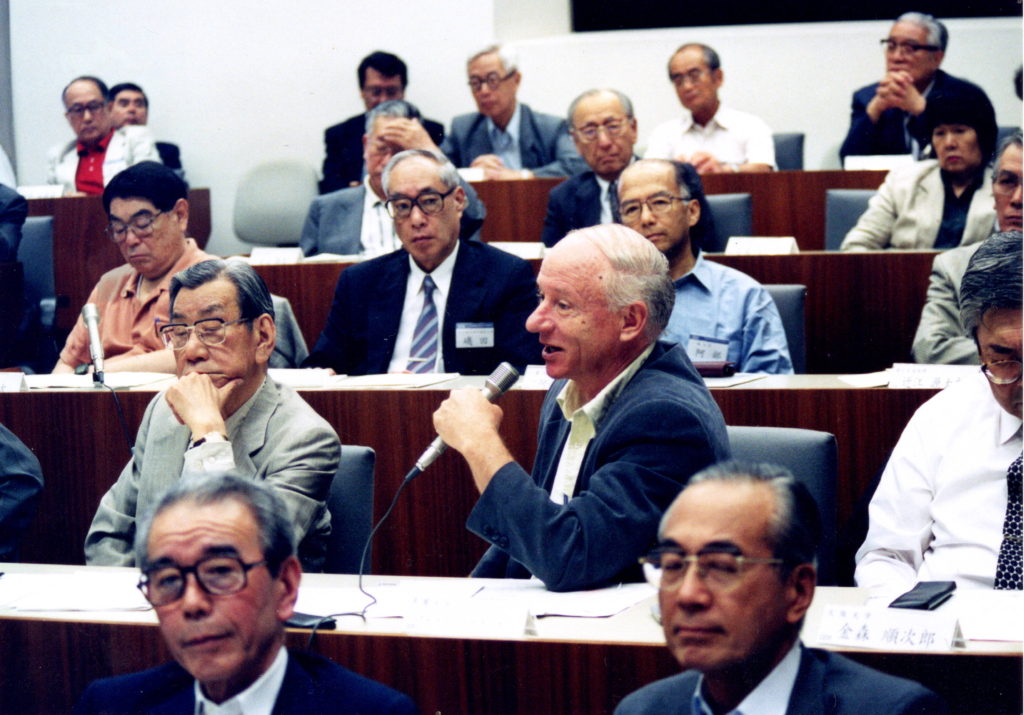Chapter 57 – Exports, Oil Shocks and Mini-Bubbles
BETWEEN FOUR WORLDS: CHINA, RUSSIA, JAPAN AND AUSTRALIA.
BETWEEN FOUR CAREERS and FOUR LANGUAGES.
Saving Japan’s Demand-Deficient Economy
1. Exports, Oil Shocks and Mini-Bubbles
2. Oil Shocks to the Rescue
3. Asset Bubbles also to the Rescue
As domestic demand relative to supply began to fall off in the early seventies, goods makers began even more to turn to overseas markets to dispose of surplus production.
The result, naturally enough, was growing export surpluses, trade frictions and upward pressure on the yen.
1. Exports, Oil Shocks and Mini-Bubbles
The trade frictions could be handled in part by hiring lobbyists and by insisting that the rest of the world had to observe the principles of free trade while Japan itself was denying those principles in order to develop its own car, computer and chip industries.
But there was a limit to such deceptions. Eventually, they were to lead the US to threaten special import surcharges on Japanese goods, which is how I had met Hosomi originally, on the 1982 Finance Ministry committee to discuss ways around the surcharge issue.
But upward pressure on the yen was less avoidable. Intervention in foreign exchange markets to try to keep the yen cheap could only do so much.
With the 1972 Nixon shock forcing the yen to up-value from 360 to the US dollar to around 240, exporters and the economy seemed headed for trouble.
2. Oil Shocks to the Rescue
But help was to come from a very unexpected direction – the 1973 oil shock.
Expensive oil imports cheapened the yen greatly. The cheaper yen allowed export industries to continue to survive and thrive.
True, expensive oil mainly harmed oil consuming industries.
But since the export industries were the leading industries for the economy, the harm was greatly lessened. (Leading industries are important since they usually stimulate more investment in ancillary industries.)
As well, the oil shocks stimulated new investment in energy saving devices. The net effect on the overall economy from the oil shock was almost certainly positive.
The main problem was the inflation triggered by oil price rises. But of the harm can be delayed, until government decides to put on the brakes.
More Oil Shocks
But this quick economy recovery in turn meant that the trade surpluses would to continue their rise.
And as before, the more you exported the more the yen appreciated. And the more the yen appreciated, the harder it was to export.
As the Japanese used to say, you strangled yourself with your own necktie.
Fortunately another rescuer was to emerge, this time in the shape of the second oil shock of the late seventies, when Iraq attacked Iran.
Once again the yen cheapened. Like desert flowers in bloom after a sudden downburst, the exporters gained yet another new lease of life.
(Later, on the lecture circuit, I used to enjoy telling audiences that the two oil shocks probably did Japan more good than harm. Most of my listeners were shocked. They had gone along with the conventional wisdom that said the oil shocks were bad for the economy.)
3. Asset Bubbles also to the Rescue
But rising exports could only do so much to solve the chronic lack of demand problem.
In effect, foreign demand was substituting for lack of domestic demand, and there were limits to how far this could go.
Another rescuer was needed, and this time it came in the shape of the continuous land and share bubbles/booms running right through the eighties to the grand-daddy of them all – the Bubble of the late eighties.
This time domestic demand was stimulated greatly.
But in the worst possible way.
